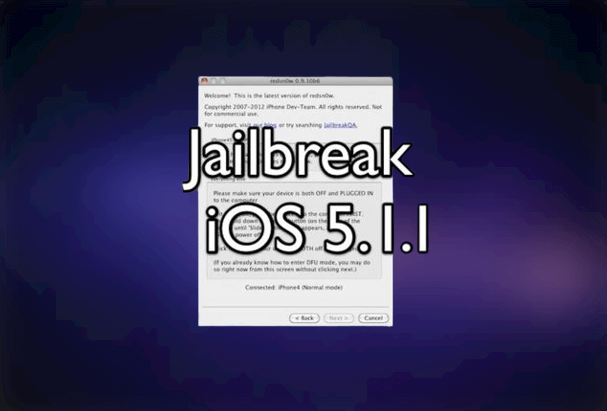Installing Android on iOS 5.1.1 is not possible, as the two operating systems are fundamentally different and not compatible with each other. iOS is designed specifically for Apple devices, while Android is designed for a range of other smartphones and tablets.
If you are interested in experiencing Android, There are a few different ways to install Android on iOS 5.1.1, but the most common and easiest way is to use a program like iDroid. iDroid is a free program that will let you install Android on your iOS device in just a few minutes.
Once you have downloaded and installed iDroid, simply connect your iOS device to your computer and follow the prompts to complete the installation process. Now, we will explain all the processes about how to Install Android on iOS 5.1.1. If you want to install Android on iOS 5.1.1 you should follow this post carefully.
List of Contents
Read more: How To Unjailbreak IOS 12.4- Easy Steps
How to Install Any App on iOS 5.1.1 or Older?
Installing apps on older iOS versions can be a bit trickier. But don’t worry, I’m here to guide you through the process step by step. Here’s how you can install any app on iOS 5.1.1 or older:

Check App Compatibility: Start by checking if the app you want to install is compatible with iOS 5.1.1 or older. Many popular apps have dropped support for older iOS versions. So it’s important to verify this first.
Access the App Store: Open the App Store on your device and tap on the “Updates” tab at the bottom of the screen. This will take you to a list of all the available updates for your installed apps.
Search for the App: If the app you want to install is not listed under updates. Then, tap on the “Search” tab at the bottom of the screen and type in the name of the app. Tap on the app when it appears in the search results.
Check App Compatibility: Once you’ve selected the app, then, scroll down to its description page. And check it supports iOS 5.1.1 or older. The compatibility information is usually mentioned in the app’s description or in the “Requirements” section.
Download a Compatible Version: If the app is compatible with your iOS version, you can proceed with downloading it. However, if the app requires a newer iOS version. You won’t be able to install it on your device.
Check App Store Purchase History: For some apps that are no longer available on the App Store but you have previously downloaded. You may be able to find them in your purchase history. Go to the “Updates” tab and tap on the “Purchased” option at the top of the screen. From there, you can browse through your previously downloaded apps. And see if the app you are looking for is listed.
Install from iTunes: If the app is not available in the App Store and you have previously purchased it. You can try installing it through iTunes on your computer. Connect your device to your computer and open iTunes. Then, go to the “Apps” section under your device’s summary tab. From there, you can browse through your purchased apps and choose to sync the app to your device.
Jailbreak: If all else fails, you really need to install an app that is not available through the official App Store. You may consider jailbreaking your device. Jailbreaking allows you to bypass Apple’s restrictions and install apps from third-party sources. However, it should be noted that jailbreaking can void your device’s warranty. And may expose your device to security risks.
Research Alternate Apps: In case the specific app you are looking for is not available or compatible with your iOS version. It’s always worth researching for alternative apps that serve a similar purpose. There might be other apps in the App Store that can fulfill your needs and provide a similar user experience.
Remember to provide detailed information about the app, such as its name and any relevant details. When contacting the developer. They might be able to guide you toward a solution or suggest an alternative course of action. Keep in mind that not all developers may respond or be able to help.
Check Also: How to Install iOS 12 on iPad 4th Generation- Best Guide
How to jailbreak iOS 5.1.1?
Jailbreaking iOS 5.1.1 is a process that allows you to customize and enhance your device beyond the limitations set by Apple. While it may offer more freedom, it also comes with some risks. Here is a step-by-step guide on how to jailbreak iOS 5.1.1:

Backup your device: Before proceeding, it’s essential to back up your iPhone or iPad using iTunes or iCloud to ensure you don’t lose any important data.
Find a trusted jailbreak tool: Search online for a reputable jailbreak tool that is compatible with iOS 5.1.1, such as Redsn0w or Absinthe.
Download the jailbreak tool: Once you have found a trusted tool, download it to your computer.
Connect your device: Plug your iPhone or iPad into your computer using the USB cable.
Launch the jailbreak tool: Open the downloaded jailbreak tool on your computer.
Follow the on-screen instructions: The tool will guide you through the jailbreak process. Follow the instructions carefully and make sure to read any warnings or prompts that appear.
Wait for the jailbreak to complete: The tool will perform various steps to jailbreak your device, which may take some time. Be patient and avoid interrupting the process.
Restart your device: Once the jailbreak is complete, you will be prompted to restart your device. Do so by following the instructions provided.
Install a package manager: After restarting, you will need to install a package manager such as Cydia, which will allow you to browse and install jailbreak tweaks and modifications.

Open the package manager: Launch Cydia or the package manager you installed and wait for it to initialize.
Customize your device: Now that you have successfully jailbroken your iOS 5.1.1 device, you can start exploring the vast world of customization options. Install themes, tweak system settings, and discover new features not available on a stock iOS device.
Be cautious: While jailbreaking can be exciting, it’s important to exercise caution when installing third-party tweaks and modifications. Stick to reputable sources and read user reviews to ensure the safety and stability of the tweaks you install. Some tweaks may cause compatibility issues or even lead to system instability.
Regularly update your jailbreak: As new versions of iOS are released, it’s important to keep your jailbreak up to date. This will ensure that you have access to the latest features and security patches.
Frequently Asked Questions (F.A.Q’s):
Can I Install Android on iOS?
It is not possible to install Android on iOS. iOS and Android are two different operating systems that are not compatible with each other.
Can iOS 5.1 1 Be Upgraded?
iOS 5.1.1 can not be upgraded to a newer iOS version. The latest iOS version that can be installed on an iPhone 4 is iOS 7.1.2.
Can iPhone 5S Install Android?
No, the iPhone 5s cannot install Android. Android is a mobile operating system developed by Google, and the iPhone 5s runs on Apple’s iOS operating system. While it is possible to jailbreak an iPhone and install unofficial apps not approved by Apple, it is not possible to install the Android operating system.
Can I Install Android on My Old iPad?
No, you cannot install Android on your old iPad. While there are many ways to get Android apps running on iOS devices, they all require jailbreaking the device, which is not possible on newer devices like the iPad. There are also no official Android app stores for iOS devices, so even if you could get Android apps running on your iPad, you would have nowhere to get them from.
Conclusion
Installing Android on iOS 5.1.1 can be a complex process, but with the right resources and guidance, it is possible to achieve this. By following the steps outlined in this blog and conducting thorough research, you can open up a whole new world of possibilities for your iOS device.
However, it is important to note that this process may void your warranty and could potentially lead to unforeseen issues or complications. It is always recommended to proceed with caution and back up your device before attempting any modifications.
If you are interested in learning more about how to install Android on iOS 5.1.1, be sure to check out the resources provided in this blog for detailed instructions and valuable insights.










